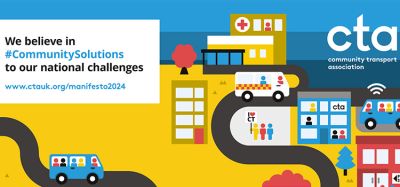What role will road pricing play in the urban mobility system of the future?
- Like
- Digg
- Del
- Tumblr
- VKontakte
- Buffer
- Love This
- Odnoklassniki
- Meneame
- Blogger
- Amazon
- Yahoo Mail
- Gmail
- AOL
- Newsvine
- HackerNews
- Evernote
- MySpace
- Mail.ru
- Viadeo
- Line
- Comments
- Yummly
- SMS
- Viber
- Telegram
- Subscribe
- Skype
- Facebook Messenger
- Kakao
- LiveJournal
- Yammer
- Edgar
- Fintel
- Mix
- Instapaper
- Copy Link
Posted: 22 June 2011 | Ivo Cré, Project Manager, Polis | No comments yet
The number of cities in Europe that are implementing urban road user charging schemes is growing very modestly. The EU is planning the preparation of the policy framework for urban road user charging. At the same time, a new debate emerges in Brussels, and in EU member states: what is the future funding actually needed to maintain, and improve urban transport systems in view of European targets and ambitions? In this discussion, the self-financing potential of transport investments is crucial and Urban Road User Charging (URUC) is coming into view as a financing tool. But can urban tolling serve that purpose, when it is initially designed to curb congestion?
The current state of play of urban road user charging in the EU
Economic theory states that as the cost of transport is better internalised, use of infrastructures will become more efficient. Goods and people will stop moving, or will move at different times of the day, when infrastructure is less scarce. The money collected from internalisation should ideally go to financing solutions that in the future help to avoid external costs (such as new infrastructure, or better adapted infrastructure, new transport options, such as public transport, or cleaner vehicles). For a while, urban tolling was a very hot topic in Europe.
The number of cities in Europe that are implementing urban road user charging schemes is growing very modestly. The EU is planning the preparation of the policy framework for urban road user charging. At the same time, a new debate emerges in Brussels, and in EU member states: what is the future funding actually needed to maintain, and improve urban transport systems in view of European targets and ambitions? In this discussion, the self-financing potential of transport investments is crucial and Urban Road User Charging (URUC) is coming into view as a financing tool. But can urban tolling serve that purpose, when it is initially designed to curb congestion? The current state of play of urban road user charging in the EU Economic theory states that as the cost of transport is better internalised, use of infrastructures will become more efficient. Goods and people will stop moving, or will move at different times of the day, when infrastructure is less scarce. The money collected from internalisation should ideally go to financing solutions that in the future help to avoid external costs (such as new infrastructure, or better adapted infrastructure, new transport options, such as public transport, or cleaner vehicles). For a while, urban tolling was a very hot topic in Europe.
The number of cities in Europe that are implementing urban road user charging schemes is growing very modestly. The EU is planning the preparation of the policy framework for urban road user charging. At the same time, a new debate emerges in Brussels, and in EU member states: what is the future funding actually needed to maintain, and improve urban transport systems in view of European targets and ambitions? In this discussion, the self-financing potential of transport investments is crucial and Urban Road User Charging (URUC) is coming into view as a financing tool. But can urban tolling serve that purpose, when it is initially designed to curb congestion?
The current state of play of urban road user charging in the EU
Economic theory states that as the cost of transport is better internalised, use of infrastructures will become more efficient. Goods and people will stop moving, or will move at different times of the day, when infrastructure is less scarce. The money collected from internalisation should ideally go to financing solutions that in the future help to avoid external costs (such as new infrastructure, or better adapted infrastructure, new transport options, such as public transport, or cleaner vehicles). For a while, urban tolling was a very hot topic in Europe.
For a while, each productive debate about finding solutions for metropolitan transport challenges ended in lively discussions between those in favour of congestion charging, and those against. And then things became a lot quieter about the topic and it seems the discussion has cooled down.
Also on the research and development front, the topic is less visible. After the end of the CURACAO project, no new large scale EU research projects were granted in this area of knowledge. There are interesting activities such as studies in three CIVITAS programme demonstration cities. Worth mentioning is also the DEMOCRITOS project. This project introduces the ‘Mobility Credits Model’ as a transport specific platform that will enable travellers, mobility providers, technology providers and transport planners to understand the implications of climate policy and increasing prices for greenhouse gas emissions, and to identify new opportunities in urban mobility first and in extra-urban mobility later. Modelling exercises and policy assessment of the implementation of ‘electronic wallet’-like systems for mobility credits have been carried out for the cities of Lisbon (PT), Stuttgart (G), Craiova (RO) and Genoa (IT).
The EU funded CIVITAS Initiative helps cities to achieve a more sustainable, clean and energy efficient urban transport system by implementing and evaluating an ambitious, integrated set of technology and policy based measures. In this framework, the city of Bath (UK) is carrying out a feasibility study on financial access control for HGV on specific through roads. The study will examine the potential impact of combining freight consolidation and urban distribution with freight demand management measures. Two cities are investigating the more ‘classic’ city centre tolling: The city of Ljubljana (SLO) has engaged in the same context to a process that will lead to a formal agreement on a congestion charging scheme for the Ljubljana region between relevant decision makers and is elaborating several technical studies (including modelling) on suitable congestion charging options. This should lead to a technical solution for the implementation of the selected scheme. Finally, the city of Zagreb (CRO) is using the knowledge of other cities that have already introduced some form of limiting vehicle entrance to find the most appropriate instrument. The city will report on this search for knowledge in the form of a study.
With Götenborg as the only city (in Europe and most likely even on Earth) to plan to take up congestion charging (in its national version, the Swedish congestion tax) in the coming years, it seems like the tool has been referred back to the academic world, and moved out of the transport planners toolbox. But is this so? It seems that congestion charging is doomed to reappear, as public budgets will continue to be under pressure. In the meantime, there is time to better prepare the policy framework for urban road user charging.
EU Policy: ambitions formulated, scheduled for completion
Is the world forgetting about urban road user charging? At least one important stakeholder in the field, the European Commission, has not! As previously mentioned, the European Commission has not granted research funding for the topic since the CURACAO project1, yet, the European urban transport policy agenda is written with Urban Road User Charging (URUS) in mind.
One of the grim scenarios that the European Commission wants to avoid is that the establishment of different local schemes will frustrate the freedom of movement of goods and people. The need for travellers and freight operators to invest in a wide range of different technical systems or to face difficulties accessing information about local schemes should be overcome.
Firstly, the European Commission established a strategy for the internalisation of external costs2 in 2008. This under-estimated document refers the urban issue back to the Urban Mobility Action Plan (described later in this article), but mentions that “the importance of developing harmonised criteria for urban traffic restrictions and promoting technological interoperability could help harmonise strategies for the internalisation of external costs in urban areas across Europe.”
Secondly, no less than three actions in the highly appreciated Urban Mobility Action Plan3 referred to urban pricing and related measures (Action 7 – Access to green zones; Action 12 – Study on urban aspects of the internalisation of external costs; Action 13 – Information exchange on urban pricing schemes). The action plan laid down, in practical terms, what the EC’s ambitions are for urban transport. Most of the implementation of the actions mentioned has so far been linked to the Urban Access Restrictions Study4.
Thirdly, road pricing is specifically mentioned in the recent transport White Paper5 as a tool that (together with “the removal of distortions in taxation”) “can also assist in encouraging the use of public transport and the gradual introduction of alternative propulsion” (this in view of the EC’s target to phase out the use of conventionally propelled vehicles in city centres by 2050). The EC also sees the move towards full application of “user pays” and “polluter pays” principles as one of the 10 goals of the white paper. The EC also proposes to “develop a validated framework for urban road user charging and access restriction schemes and their application, including a legal and validated operational and technical framework covering vehicle and infrastructure applications.”
Finally, the European Electronic Toll Service is supposed to be fully (inter)operational by 2013. Although smaller and local schemes are exempt of this system, it will have its effects on urban road user charging (e.g. through the further rollout of on-board units, and the increased general awareness of charging schemes).
The bigger picture: safeguarding future public budgets for urban transport when facing new and major challenges
On the European policy side, a bright future for road user charging is cast in stone and arrangements are put in place to enable take-up. At the same time, cities face a great challenge: the survival of local public expenditure in urban transport systems, being these investments and operations of road networks, public transport networks or information networks. The financial crisis and its impacts on local budgets has put the discussion of road pricing on the back burner.
It is difficult to make a general assessment of the overall impact of the financial crisis on urban transport policy in the European Union, due to the different national economic and budget situations, as well as the diverse national legal and regulatory frameworks in which the management of urban transport is set. However, we can experience that all over Europe the pressure on public budgets, and the current paradigm to cut costs in the public sector, has had tremendous effect on several aspects of urban transport.
Short-term effects to be mentioned are the postponement or cancelation of investments such as bus corridors, bottleneck mitigation (expensive tunneling and bridge projects) and the reduction in numbers of civil servants dedicated to urban transport planning and operations. The impacts of the budget crisis also coincide with a further decentralisation of competences (sometimes without the accompanying budget) from the national governance level to regional or local authorities. Cities face new challenges in terms of transport. Tackling these challenges will bring substantial costs to local budgets. We can name a few: The EU’s TEN-t policy is finally taking notice of the urban dimension of trans- European traffic: bottlenecks on the TEN-t road and rail network often occur where local and international networks meet or coincide. Cities face important investments in terms of security of information and public transport networks in the framework of the EU’s critical infrastructures mapping. Last but not least, there is the immense challenge for the introduction of new technologies such as grid connected vehicles (with the EU transport white paper’s ambition to phase out conventionally fuelled vehicles in city centres by 2050) and cooperative vehicleinfrastructure Intelligent Transport Systems. The deployment of both technologies requires a strong involvement of local authorities, in practical as well as in financial terms.
The EU is promoting the take up of the concept of Sustainable Urban Mobility Plans (SUMP): integrated strategic transport plans that help cities combine all the aspects of urban mobility, and meet European targets with regards to energy use, noise mitigation and air quality. The SUMP process includes a detailed action plan, linked to a financial plan in order to execute the overall strategy.
Get smarter!
In general, we can say that local authorities are faced with big budgetary responsibilities and challenges. They are getting organised to face this challenge. Also, the European Union is aware of the issue, and of its own incapacity to provide substantial investment budgets. At an European level, several actions are ongoing to map the future funding needs in transport for local authorities and to provide tools that can create leverage for external (public and private) funding.
The Directorate General MOVE is currently carrying out a targeted study in this regard. This study is also part of the implementation of the Urban Mobility Action Plan. The results of the study are highly awaited, and will shed light on the synergies between sustainable urban mobility and regional policy at EU level, including regional policy financial instruments; future funding needs for urban mobility improvements involved in the adoption of EU policies related to sustainable urban development and related transport policies; options for EU financial contributions to these improvements.
The European Investment Bank, having installed successful facilities such as ELENA, is also currently reviewing its lending policy in support of a sustainable transport sector.
Complementary to all of this, the European Parliament’s TRAN committee is currently a patron of a survey on ‘Economic aspects of sustainable mobility’, assessing the impacts of eco-innovations on transport, environment and the economy.
Road pricing: back in the picture – with conflict of interest?
The absence of substantial budget prospects coming from the upper governance levels, such as the European and national governments, has the effect that cities are getting better at planning for their future funding needs, and are getting more experienced in finding their way through the abundance of financial engineering techniques. And it is in this regard that road pricing comes back into the picture. We can expect that the self-financing potential of urban transport investments (single infrastructures as well as integrated packages of measures) will become crucial for getting access to external funding (being private or public).
The inclusion of any form of revenue raising (being tolling, parking charges or increased public transport patronage) in the project definition will become an important asset for its credibility and success in finding investors. This can raise a conflict of interest. So far, the wellknown European URUC schemes (Stockholm and London) have been designed to curb congestion more than they were designed to raise revenue. The success of the schemes has been the multimodal packaging of the congestion charge, with accompanying measures for pedestrians, cyclists and public transport. The question is whether the holistic or integrated approach for URUC conflicts with the revenue raising potential.
The CURACAO reports that London and Stockholm, which have implemented URUC together with integrated accompanying packages, have achieved significant levels of revenue for reinvestment. After initial set up costs and running costs are taken into account, URUC schemes can generate significant streams of funding for public transport and other transport improvements. Indeed, in many cases the provision of extra capacity in public transport is a key prerequisite before URUC goes live. It should be noted that actual scheme revenues can turn out to be less than those estimated prior to going live, due to the number of exempted vehicles (Stockholm), and the generally higher than anticipated reduction in traffic levels (London). CURACAO also reports that the acceptability of URUC is highly dependent on the uses made of any surplus revenues.
On the other hand, one sees from the positive experience in the Oslo and Trondheim schemes, that the initial goal to raise revenue to fund additional road infrastructure together with some accompanying measures has also been completed by positive effects on the modal split. Acceptability of road user charging has proven to be less of an issue in these contexts as well. This is an argument that will specifically play when urban road user charging moves out of capital cities and large metropolitan areas, and is implemented in medium size cities.
Conclusions
European cities are on their way to map the future funding needs in Europe, and are getting knowledgeable with regards to financial tools to manage project investments. The increasing importance of self-financing capacity of urban transport investments opens the door for tailor made solutions and that self financing has many forms, and road pricing will be one of these.
Optimistically speaking, one could presume that the current preparation of the EU policy framework for URUC will facilitate its roll-out in Europe, even when the principle decision on the establishment of schemes will finally be taken at the local (or national level). Also, technological take-up of advanced ITS (with Galileo in operation, and fleet-wide presence of CVIS like systems) will smoothen deployment of smaller scale systems.
European good practice, however limited in numbers as it might be, proves that transport related objectives can coincide with revenue raising objectives to fulfill the financial needs for transport investments. If URUC experts and financial engineers can build a case for URUC as an efficient measure to combine both objectives, there is a future for URUC in Europe, even in smaller cities with specific mobility and funding needs.
References
1. www.curacaoproject.eu
2. COM(2008) 435 final, Strategy for the internalisation of external costs
3. COM(2009) 490 final, Action Plan on Urban Mobility
4. Results available from www.accessrestriction.eu
5. COM(2011) 144 final, WHITE PAPER, Roadmap to a Single European Transport Area – Towards a competitive and resource efficient transport system
About the Author
Ivo Cré has been Project Manager at Polis since May 2006. Before joining Polis, Ivo was Policy Officer for mobility at EUROCITIES, Assistant to a Member of the European Parliament, Advisor to the Belgian Minister of Environment, and Project Leader at Langzaam Verkeer. He has been involved in a wide range of European transport projects and also coordinates the POLIS Working Group on economic and social aspects of transport.
Polis is a network of European cities and regions working together to develop innovative technologies and policies for local transport. Since 1989, European local and regional authorities have been working together within Polis to promote sustainable mobility through the deployment of innovative transport solutions. Our aim is to improve local transport through integrated strategies that address the economic, social and environmental dimensions of transport. To this end, Polis supports the exchange of experiences and the transfer of knowledge between European local and regional authorities. It also facilitates the dialogue between local and regional authorities and other actors of the sector such as industry, research centres and universities, and NGOs.
Related topics
Business Models, Fleet Management & Maintenance, Multimodality, Ticketing & Payments, Transport Governance & Policy
Issue
Issue 3 2011
Related organisations
Polis
Related people
Ivo Cré








